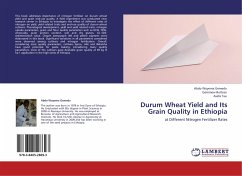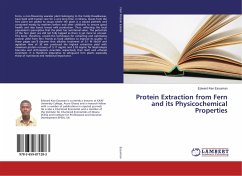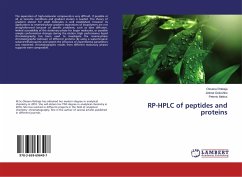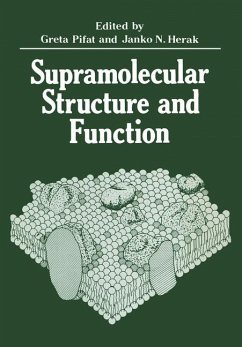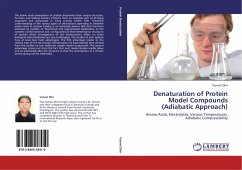
Denaturation of Protein Model Compounds (Adiabatic Approach)
Amino Acids, Electrolytes, Various Temperatures, Adiabatic Compressibility
Versandkostenfrei!
Versandfertig in 6-10 Tagen
52,99 €
inkl. MwSt.

PAYBACK Punkte
26 °P sammeln!
The amino acids composition of protein determines their unique structure, function and folding kinetics. Proteins form an essential part of all living organisms and participate in every process within cells. Therefore understanding of the various types of interactions operating in between amino acids to protein folding is an extremely serious task that has been achieved by number of theoretical and experimental studies.Due to the complex conformational and configurational three-dimensional structures of protein direct investigations of the solute/solvent effect on these biological macromolecul...
The amino acids composition of protein determines their unique structure, function and folding kinetics. Proteins form an essential part of all living organisms and participate in every process within cells. Therefore understanding of the various types of interactions operating in between amino acids to protein folding is an extremely serious task that has been achieved by number of theoretical and experimental studies.Due to the complex conformational and configurational three-dimensional structures of protein direct investigations of the solute/solvent effect on these biological macromolecules are very challenging. The studies of such systems have at least two main advantages. The first advantage relates to the relative ease of the microscopic interpretation of experimental data derived from the studies on low molecular weight model compounds. The second advantage comes out from the fact that such model studies readily allow one to systemically alter the structure so that the contribution of a chosen atomic group can be addressed.



